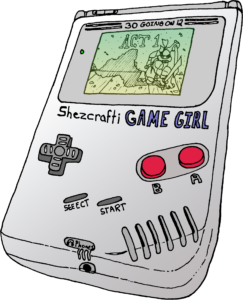
What started off as a simple post about my appreciation for the music of the Streets of Rage series of games has become something of a humbling learning experience for me because it wasn’t until a few hours ago that I knew who Yuzo Koshiro was and the amazing music he’s contributed to video games. And shame on me because as big a fan I am of the Streets of Rage music, I really should know these things. (It’s times like these I wouldn’t mind throwing piles of money at Wikipedia out of gratitude for the knowledge it has given me.)
Yuzo Koshiro, I learned, is widely regarded as one of the most influential innovators in video game music.

Here’s just a sampling of some of the familiar games he’s composed music for:
- Streets of Rage I, II, & III
- Sonic the Hedgehog
- Beyond Oasis
- Shinobi I & II
- Shenmue
- Castlevania: Portrait of Ruin
- Kid Icarus: Uprising
(Here’s the full list, which is quite extensive.)
Biography: “Doing So Much With So Little”
Having been passionate about Arcade games and music as a teenager, Yuzo Koshiro started to submit PSG-generated original compositions to a gaming magazine. He was recruited as a composer and sound designer at Nihon Falcom in 1986 and subsequently offered landmark melodic scores to Xanadu Scenario II, Romancia, Legacy of the Wizard, Ys I, Ys II, and Sorcerian for early computers. He left the company to become a freelancer after learning he would receive no credit or royalties for his extensively reused compositions. He eventually made popular breakthroughs with scores to The Revenge of Shinobi, Misty Blue, and ActRaiser.
Koshiro later worked on productions by his mother’s company Ancient. He offered an accomplished Game Gear port of Sonic the Hedgehog‘s music, groovy techno scores to the Streets of Rage series, and a modernist orchestral score to Eternal Oasis. For the Saturn and Dreamcast, Koshiro worked closely with Ancient on projects like Legend of Oasis, Vatlva, and Card Captor Sakura, but few were commercially. Furthermore, the project Streets of Rage IV was cancelled several after he directed some demos. He engaged in independent works during this lull such as Culdcept, Shenmue, and Zork I: The Great Underground Empire.
As the current president of Ancient, Koshiro has overseen and scored their recent titles Car Battler Joe, Ueki no Housoku, Amazing Island, and Hitman Reborn. He has also engaged in high profile works like the trance soundtracks to the Wangan Midnight series, the orchestral concerts of Thomas Boecker, and several collaborative tribute projects. He has recently enjoyed a surge of popularity thanks to his retrospective FM synth scores to the Etrian Odyssey series. He remains undoubtedly one of the most influential, versatile, and creative game composers of all time and will be forever known for “doing so much with so little.”
(Read Yuzo Koshiro’s full biography at Square Enix Music Online.)
Streets of Rage
Having grown up with Sega Genesis, I spent many, many hours playing the classic brawlers Streets of Rage I & II. So what if they came bundled with my console? Those games (literally) kicked ass, and much of the enjoyment can be attributed to their wonderfully grimy, groovy, hip hop soundtracks.
Koshiro’s music for the first two Streets of Rage games had a polished acid jazz, almost sexy vibe unlike any other games of the early ’90s. His music for Streets of Rage 2, in particular, was a masterpiece.
YouTube user NickAura put together this fantastic Streets of Rage 2 medley that hits on all of the great pieces of music you’ll hear in the game:
httpv://www.youtube.com/watch?v=sQiaNhvnohU
I would have to agree with NickAurua’s video description which reads: “Despite the Genesis’ sound chip being inferior to the Super Nintendo’s, Yuzo Koshiro really managed to push the boundaries of what the Genesis was capable of, creating some of the finest music in gaming history!”
From the opening introductory sequence that invokes the musical spirit of Enigma’s “Sadeness: Part 1” (one of my favorite songs ever, by the way) to level after level of slickly-crafted house beats and chill, spacey grooves, the game is topped off with an uplifting ending theme that still brings tears to my eyes to this day.
By the way, if you’re wondering why I haven’t mentioned the Streets of Rage III music yet, it’s because though still enjoyable in its own right, it’s drastically different from its previous games’ counterparts. Koshiro went in a very experimental direction for the third game, for which he used auto-generated compositions to produce a sound that combines elements of dubstep, trip-hop, and jungle beats. Still extremely cool, but it just doesn’t have the same memorable vibes and melodies as the first two games.
With music this awesome, what the hell was everyone on those streets raging about? If Streets of Rage were a movie, it’d be Breakin’ and Axel, Blaze, Skate, and Adam (who could totally be played by Van Damme in blackface) would solve their differences with the power of dance.

If you’ve never played the Streets of Rage games, you’re missing out on some of the most fun gaming experiences the Sega Genesis has to offer.
Koshira the DJ?
Oh, one more thing. In my YouTube travels, I stumbled upon this awesome video of Yuzo Koshira DJ’ing his own works at a Tokyo club. How cool is this?


